You are using an out of date browser. It may not display this or other websites correctly.
You should upgrade or use an alternative browser.
You should upgrade or use an alternative browser.
Sets (STX) Strixhaven Testing/Includes Thread
- Thread starter TrainmasterGT
- Start date
Chris Taylor
Contributor
And I missed it can only target friendly creatures
Naaaah I’m just kidding
Don't scare me like that!
I'm torn on this set, because some cards I really like, others I hate (mostly MDFC that are too wordy and complex). I won't be including very many cards, but some I do enjoy even if not for my cube (like Multiple Choice)
Including
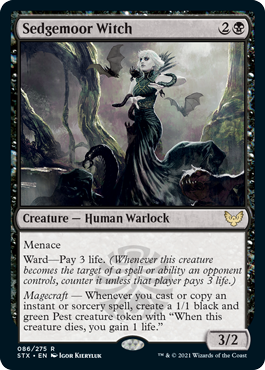
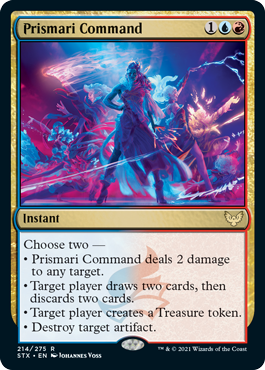
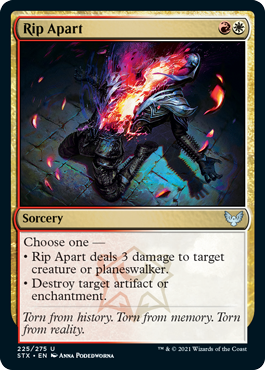
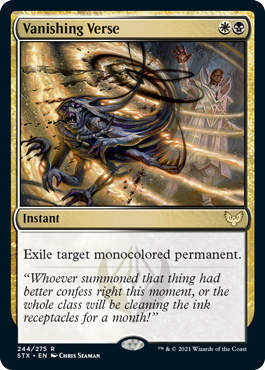
Testing
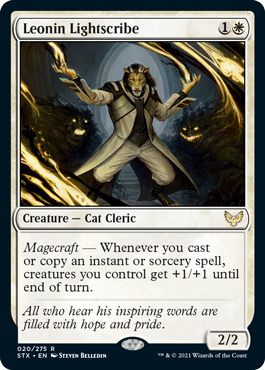
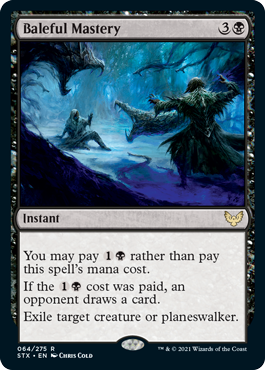

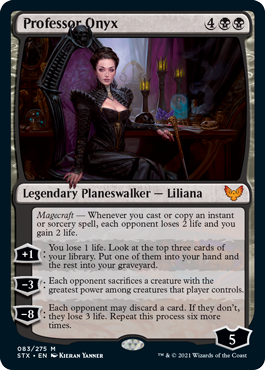
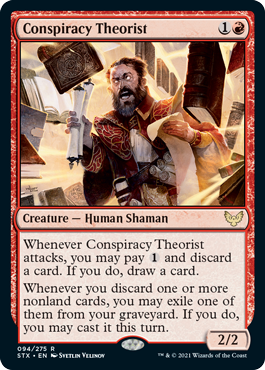
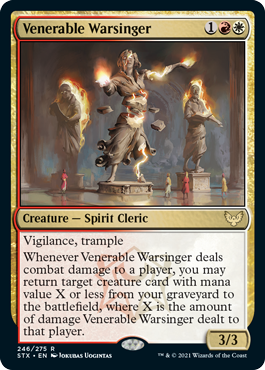
In a slight change in philosophy, I decided to add the hyper-efficient multicolored removal spells. They are fun to play with and answer a wide range of permanents. I also currently have all the slots I want for archetypes, so I can afford a few non-synergy pieces. They also allow me to de-clutter my 3 drop section where a lot of good mono-colored removal is.
Sedgemoor Witch: A lot has been said about this card, but it really is amazing. Good body and an ability that slots right into the Mardu decks I am promoting in my cube that are GY and spell based and produce tokens.
Leonin Lightscribe: Fits into the same deck as the Witch and can give a huge buff...or do nothing. The floor is why I am not certain I am going to be playing this one, even if it does warrant testing IMO.
Baleful Mastery: My 3 drop slot is pretty bloated as I mentioned so having the option to pay 2 mana for premium removal is tempting. I am not sure how my playgroup will see the card, but they do like Arcane Denial so I am hopeful.
Poet's Quill: Last week's play session confirmed it, lifelink is amazing in multiplayer. You get to swing and have a life buffer protecting you. What this has going is that it loots on ETB which is precious in Black for me as I don't have very many of these effects. I am afraid that the equip cost is just too much and I am not a fan of the Lessons portion of the card (as I won't be playing them).
Professor Onyx: This is probably wishful thinking on my part, but I would love to be able for this to work in my cube. It fits a lot of bills:
- It self-mills for card advantage
- Multiplayer protection ability
- Non-narrow storm win condition (kind of similar to Thousand-Year Storm, but with other modes)
- Reasonable starting loyalty and loyalty gain
I currently have a lot of free spells in my cube as well as cantrips and solid recursion engines. This combined with Sedgemoor Witch and Yawgmoth's Will give Black a definitive entry into the spells matter archetype making Kess, Dissident Mage an even better signpost.
Conspiracy Theorist: Cheap 2 drop that has late game applications as well as one hell of a build around potential. I currently play Dismissive Pyromancer, but this will get tested instead.
Venerable Warsinger: Good body and great attacking stats (Vigilance for multiplayer <3). I had forgotten, but finding an open opponent is a lot easier in my games, meaning more chance of triggering the ability. Plays well with graveyard, sacrifice and power boosting strategies.
Overall, I am happy with the set. Cheap, efficient answers along with some Black spells matter support. Should play nicely together to boot!
Including




Testing






In a slight change in philosophy, I decided to add the hyper-efficient multicolored removal spells. They are fun to play with and answer a wide range of permanents. I also currently have all the slots I want for archetypes, so I can afford a few non-synergy pieces. They also allow me to de-clutter my 3 drop section where a lot of good mono-colored removal is.
Sedgemoor Witch: A lot has been said about this card, but it really is amazing. Good body and an ability that slots right into the Mardu decks I am promoting in my cube that are GY and spell based and produce tokens.
Leonin Lightscribe: Fits into the same deck as the Witch and can give a huge buff...or do nothing. The floor is why I am not certain I am going to be playing this one, even if it does warrant testing IMO.
Baleful Mastery: My 3 drop slot is pretty bloated as I mentioned so having the option to pay 2 mana for premium removal is tempting. I am not sure how my playgroup will see the card, but they do like Arcane Denial so I am hopeful.
Poet's Quill: Last week's play session confirmed it, lifelink is amazing in multiplayer. You get to swing and have a life buffer protecting you. What this has going is that it loots on ETB which is precious in Black for me as I don't have very many of these effects. I am afraid that the equip cost is just too much and I am not a fan of the Lessons portion of the card (as I won't be playing them).
Professor Onyx: This is probably wishful thinking on my part, but I would love to be able for this to work in my cube. It fits a lot of bills:
- It self-mills for card advantage
- Multiplayer protection ability
- Non-narrow storm win condition (kind of similar to Thousand-Year Storm, but with other modes)
- Reasonable starting loyalty and loyalty gain
I currently have a lot of free spells in my cube as well as cantrips and solid recursion engines. This combined with Sedgemoor Witch and Yawgmoth's Will give Black a definitive entry into the spells matter archetype making Kess, Dissident Mage an even better signpost.
Conspiracy Theorist: Cheap 2 drop that has late game applications as well as one hell of a build around potential. I currently play Dismissive Pyromancer, but this will get tested instead.
Venerable Warsinger: Good body and great attacking stats (Vigilance for multiplayer <3). I had forgotten, but finding an open opponent is a lot easier in my games, meaning more chance of triggering the ability. Plays well with graveyard, sacrifice and power boosting strategies.
Overall, I am happy with the set. Cheap, efficient answers along with some Black spells matter support. Should play nicely together to boot!
Testing
Lash of Malice
Venerable Warsinger
Prismari Command
Sedgemoor Witch
Elite Spellbinder
Lash of Malice is the biggest hit by far for me, surprised it’s not making more people’s testing lists!
Lash of Malice
Venerable Warsinger
Prismari Command
Sedgemoor Witch
Elite Spellbinder
Lash of Malice is the biggest hit by far for me, surprised it’s not making more people’s testing lists!
Lash of Malice is the biggest hit by far for me, surprised it’s not making more people’s testing lists!
It's a deceptively good, elegant, and flexible card...I think more people will end up trying it out with time. I don't think I have the room to squeeze it in my cube.
On to the lessons! Since my color wheel is WBUGR, it's going to look a little wonky as far as Strixhaven includes are concerned. Looking at the colored lessons, there are definitely some very situational ones there. Before I go into individual cards though, there's one very important thing to realize. Lessons being situational is extremely fine! The important thing, when considering whether you want to include these cards, is if the learn spells are on rate for your cube. If they are, lessons are basically a free include! Of course they take up real estate in your cube, and cutting cards is hard, but think about the draft experience for a minute. Two of the best card types, historically, to pick up during a draft are lands and conspiracies. The reason is because neither of these take up a precious slot in your maindeck. Well, lands technically do, but they're not one of the ~23 nonland cards that form the core of your deck. Lands and conspiracies increase the density, or percentage if you will, of drafted cards with impact you can play. Consider a drafter who picks up only nonland, nonconspiracy cards. At the end of a draft, they will be able to include roughly half of their drafted cards (~23 out of 45) in their deck. Now consider someone who picked up five on color lands (mana fixing or utility) and two conspiracies. Suddenly you're looking at ~30 cards you can include, or 66% of your draft pool. Basically lands and conspiracies are free real estate for a drafter, since neither of them eat into your precious nonland slots. Now look at lessons, and see how similar these are. Again, it's important that the learn spells are on target for your power level, because these are the cards you need to include in your maindeck. In other words, these need to be part of those precious ~23 nonland slots in your draft deck. Lessons though don't. They sit in your sideboard, patiently waiting until you play a learn spell and their effect is situationally good. And if they aren't, you can always loot instead. You don't need to fetch a lesson. I think the learn/lesson mechanic is wonderful, and though I apprehend having to find the appropriate cuts, I am sure these cards will play so, so well.
I don't doubt that these cards will play great and I'm loking forward to drafting STX, but I think you're underestimating the negative effect these will have on the draft experience. Yes, there will be fewer unused cards in sideboards, but what are these cards anyway? Well, there are basically two options: They are cards that would fit your deck but didn't make the cut OR they are cards supporting a deck that just didn't get drafted (by you). In the former case, when e.g. your golgari dredge decks always end up with ~5 cards more than needed, you could cut them for something else with no harm. These replacements could be lessons or cards that then would fall into the latter category, cards that support a deck (or multiples) but the deck didn't come together (with them). In that case you have some more dead cards in every draft, but also more variety over many drafts, as that deck which wanted Brago, King Eternal now might come together. If you now replace Brago (and similar but less narrow cards) with lessons, you will inevitable reduce the number of different decks one can draft from your cube. Thats the price you are paying for giving the remaining decks more tools within a game through some wish effects for mediocre cards. And I think this is a price I don't want to pay, I enjoy having as many routes open for my drafters as possible.
One can't necessarily cut the "extra" cards that a drafter ends up with. Those are archetype redundancies that you need for a smoother draft. In the former case you would be replacing some of those with lessons that fill a similar role for that deck (but are now lessons). I don't see many situations where you actually decrease the number of playable decks outside of going way too deep on lessons that don't fit for the cube. If anything your suggestion of cutting "extra" cards to make room for more niche things will actually lead to fewer effective draftable decks, as each well-supported archetype would have a smaller pool of stable options and is therefore harder to draft.
That's not to say I think lessons are always going to be worth it. They are still below the curve cards that require support from a different set of cards to function better.
That's not to say I think lessons are always going to be worth it. They are still below the curve cards that require support from a different set of cards to function better.
One can't necessarily cut the "extra" cards that a drafter ends up with. Those are archetype redundancies that you need for a smoother draft. In the former case you would be replacing some of those with lessons that fill a similar role for that deck (but are now lessons). I don't see many situations where you actually decrease the number of playable decks outside of going way too deep on lessons that don't fit for the cube. If anything your suggestion of cutting "extra" cards to make room for more niche things will actually lead to fewer effective draftable decks, as each well-supported archetype would have a smaller pool of stable options and is therefore harder to draft.
That's not to say I think lessons are always going to be worth it. They are still below the curve cards that require support from a different set of cards to function better.
I agree to some degree. Sure, you need more cards supporting an archetype, so in some drafts you might end up wit 5 extra cards. But if you on average end up with 5 extra cards, you could cut them back a little. I think one thing that helped me improve my cube during the last year massively was cutting down on support for almost every archetype. By just going a little lower in the numbers, I've reached two things: 1) deck xy isn't always draftable in a given pool. 2) I could include more archetypes, subthemes and build arounds, as well as a few more good stuff cards I like. And while number 1 sounds like a downside, it really isn't. As long as exclude cards, for the most part, that are unplayable without a specific archetype/theme, your drafters won't be punished for picking up a blink target or madness outlet ... you guys know how flexibility works anyway.
making sure that archetype xy is always draftable decreases variety and makes "drafting on rails" a viable option.
point is, you aren't going to give a main archetype exactly 23 cards it can pull from and that's it. It would be hard to do that anyways with how many multipurpose and flexible cards there are. Because of that, on-theme Lessons aren't necessarily taking away from draft complexity at all, and potentially adding to it (since they add their own niche deck in a "lessons toolbox" deck, if supported decently)
On rails drafting is not an issue that comes up a lot here, so I think most people already understand the concept of not piling too much into just select archetypes.
On rails drafting is not an issue that comes up a lot here, so I think most people already understand the concept of not piling too much into just select archetypes.
You're making several assumptions here that are simply not correct.I don't doubt that these cards will play great and I'm loking forward to drafting STX, but I think you're underestimating the negative effect these will have on the draft experience. Yes, there will be fewer unused cards in sideboards, but what are these cards anyway? Well, there are basically two options: They are cards that would fit your deck but didn't make the cut OR they are cards supporting a deck that just didn't get drafted (by you). In the former case, when e.g. your golgari dredge decks always end up with ~5 cards more than needed, you could cut them for something else with no harm. These replacements could be lessons or cards that then would fall into the latter category, cards that support a deck (or multiples) but the deck didn't come together (with them). In that case you have some more dead cards in every draft, but also more variety over many drafts, as that deck which wanted Brago, King Eternal now might come together. If you now replace Brago (and similar but less narrow cards) with lessons, you will inevitable reduce the number of different decks one can draft from your cube. Thats the price you are paying for giving the remaining decks more tools within a game through some wish effects for mediocre cards. And I think this is a price I don't want to pay, I enjoy having as many routes open for my drafters as possible.
1. The biggest incorrect assumption here is that the Lesson cards and Learn cards don't support specific decks as whatever other random card didn't end up making the cut. You're entire argument here seems to revolve around the fact that having Lessons in the cube some how takes away from other cards that can be used to support specific archetypes. The problem is that a lot of the lessons actually do interact with other themes. There are lessons that work with Token decks, +1/+1 counter decks, Life Gain decks, and every basic deck such as Aggro, Combo, Control, and Midrange. This doesn't even mention the fact that every lesson is an instant or sorcery which improves spells matter decks. Learn cards also have several archetypal ties. Learn has a built-in discard trigger for when it is relevant. The mechanic also has lots of cards that synergize with blink decks. Plus, there are cards for most major archetypes that have a learn trigger attached. The only reason there aren't learn cards for more specific decks is because there aren't that many cards with the mechanic in the first place. The cards that exist, however, have a lot of neat interactions.
2. You're grossly overestimating the amount of cards that a Lesson/Learn package requires. There are exactly 41 that mechanic pair, with 20 lessons and 21 learn cards. Not all of these cards play work at the same power level, and not all of them work with the same mechanical themes. Most people are going to have a hard time getting more than 15 lessons and 10 cards with learn in their cubes. A much more realistic split is 10 lessons and 5 learn cards. Obviously Onder is testing 33 cards as opposed to 25 cards, but this is the exception and not the norm for this mechanic. Assuming 15 to 25 cards is the average package for a lesson package, that means each player is going to have around 2-3 lesson synergy cards in their entire draft pool. A more likely occurrence is some players go in on lessons and others don't, meaning you have 4-5 cards for 4 of 8 players. Since the average deck only mainboards 23 spells, the remaining 22 cards are effectively "wasted." Even if they are cards which the main deck could have played or another deck could have played, that doesn't change the fact that they are spoiled in that card pool. Having those extra couple of lessons means that more cards are getting played. As I've already established, lessons are often synergy cards in their own right, so they aren't taking anything away from the archetypal diversity of a cube.
3. You seem to be assuming that people will cut interesting enabler pieces to shove Learn cards into their cube. I find it hard to believe that anyone would cut a unique engine piece like Brago, King Eternal to cram an extra Environmental Sciences into their list. A much more likely outcome is someone cuts a borderline unplayable support piece or a bad generic card for a lesson or learn card which can see play in more decks. The biggest casualties of lessons are cards no one would miss anyway.
Tl;dr: Lessons are synergy cards in their own right, don't take up too much space, and will most likely replace cards that don't pull their weight right now. They don't reduce format diversity so much as they help to increase the number of different options players have available during draft and gameplay. If anything, they have the opposite effect by helping players to more fully utilize their draft pool.
Onderzeeboot
Ecstatic Orb
Obviously Onder is testing 33 cards as opposed to 25 cards, but this is the exception and not the norm for this mechanic.
I think this is a mechanic worth testing in high volume. Why hold back in testing? You can always dial back or cut the mechanic entirely if it doesn't work as well as you thought.
I suspect you're going to find yourself not wanting to grab these lessons more often than you realize.
Onder said repeatedly that they're free real estate, but that's not right. Your cube slots are your real estate, not your drafter's sideboards. You're going to be missing out on 10-15 legitimate spells so that people can occasionally do something out of their sideboards. Despite further claims, it's the same reason we don't run 200 fixing lands in out 360 list. They aren't free real estate, either, because that ruins the draft.
I also think that, while I agree it's a good idea to test more cards rather than test less, it's going to be difficult to feel the impact of those sacrificed slots. Maybe someone does well with a removal Lesson, which are below power level for a cube, and it's easy to think "Wow! That Lesson is good!" without realizing they'd have been maindecking the more efficient removal that you cut for the Lesson and would have been ahead on tempo because they didn't take a turn Learning and spending an extra 1-2 mana to get that effect.
I also think it's crazy to call Strategic Planning BAD, say no one would miss it, and then replace it with a conditional Divination.
I think these warrant testing, for sure, but the idea that you can run as many Lessons as you want "for free" is wrong.
Onder said repeatedly that they're free real estate, but that's not right. Your cube slots are your real estate, not your drafter's sideboards. You're going to be missing out on 10-15 legitimate spells so that people can occasionally do something out of their sideboards. Despite further claims, it's the same reason we don't run 200 fixing lands in out 360 list. They aren't free real estate, either, because that ruins the draft.
I also think that, while I agree it's a good idea to test more cards rather than test less, it's going to be difficult to feel the impact of those sacrificed slots. Maybe someone does well with a removal Lesson, which are below power level for a cube, and it's easy to think "Wow! That Lesson is good!" without realizing they'd have been maindecking the more efficient removal that you cut for the Lesson and would have been ahead on tempo because they didn't take a turn Learning and spending an extra 1-2 mana to get that effect.
I also think it's crazy to call Strategic Planning BAD, say no one would miss it, and then replace it with a conditional Divination.
I think these warrant testing, for sure, but the idea that you can run as many Lessons as you want "for free" is wrong.
Onderzeeboot
Ecstatic Orb
You are thinking like a cube curator, not like a player. I think your example is misguided as well, as flooding a format with good mana fixing has wildly different consequences from adding a solid learn/lesson package. Re: cube real estate, the thing is, I have never, not even once, seen one of my drafters scramble for playables. The average power level of cards in my cube is higher and the power band much more narrow than is typical for retail limited. The end result is that a user will always end up with more playables than they need. Moreover, the learn spells should all be maindeckable cards that fill a role like any other maindeckable card would. It's only the lessons that eat up cube space from "legitimate" spells. This supposed world where cutting 10-15 "legitimate" spells would leave people without an effective sideboard strategy is something I'm not even remotely afraid of, especially not in the testing stage.Onder said repeatedly that they're free real estate, but that's not right. Your cube slots are your real estate, not your drafter's sideboards. You're going to be missing out on 10-15 legitimate spells so that people can occasionally do something out of their sideboards. Despite further claims, it's the same reason we don't run 200 fixing lands in out 360 list. They aren't free real estate, either, because that ruins the draft.
Hm, I think people are maybe forgetting that cube is just a box of cards? Certainly there's no enormous flaw in having a ton of lessons and learn cards in a format, otherwise WotC wouldn't be printing a format like that, so you can just make a cube that features the same kind of environment. It's not going to be the same environment as running no lessons and learn cards but, I don't really know what difference that makes or what running lessons would "detract" from. Some formats don't run gold cards, most of us run gold cards in our cube. You could probably make a bunch of arguments about gold cards detracting from something, too.
But more mana fixing would be good and your players don't need more playables. It's the same argument. It isn't all free real estate, that's why no one does it that way.i have never, not even once, seen one of my drafters scramble for playables.
This supposed world where cutting 10-15 "legitimate" spells would leave people without an effective sideboard strategy is something I'm not even remotely afraid of, especially not in the testing stage.
This assumes it's an effective sideboard strategy, which I don't think it is unless your power level is such that you'd want to tutor for over costed spells more often than you'd like to loot.
Don't get me wrong. I'm glad someone is testing it. Just don't let the idea that your cube slots are worthless because they don't all get played every time get in the way of evaluation. You seem very excited for this mechanic and should keep in mind that a lot of other people are equally wary of it. I even like the mechanic myself, but can only imagine very rare situations where I'd want to tutor for the majority of the Lessons.
Certainly there's no enormous flaw in having a ton of lessons and learn cards in a format, otherwise WotC wouldn't be printing a format like that,
This doesn't really apply. Just because WotC does something for a retail draft 1.) doesn't necessarily mean it's a even good idea for that retail draft, they've had bad formats before, 2.) doesn't mean it will convert to a cube of similar power level, and 3.) especially doesn't mean it will convert to a cube of considerably higher power level. We can't simply port every theme into every cube because WotC did it.
Onderzeeboot
Ecstatic Orb
That's not what I'm saying though. I have called lessons free real estate, yes, but from a player's perspective. What I mean is that, provided that the learn spells are of the appropriate power level to run them in your draft decks, lessons are just free value you can generate off of your learn spells. They don't take up one of your ~23 maindeck slots, but they still do something useful for you. What I'm arguing is that this mechanic is worth dedicating cube slots to. I'm very aware that you would have to cut a bunch of cards to fit these in, and cutting cards is super hard. It's not free real state for the cube owner, but again, that's never what I meant.Just don't let the idea that your cube slots are worthless because they don't all get played every time get in the way of evaluation.
I am excited for this mechanic. I'm also convinced people are massively underrating this mechanic. I can understand people's reservations, because you look at a lesson, and it doesn't look like much, right? To me though, this feels like how people were massively underestimating how broken Companions were. These are obviously not on the same level, thank goodness, but they're still free value generated by cards you would maindeck anyway. That's why the example of losing tempo by playing a lesson instead of a removal spell you could have maindecked instead makes absolutely zero sense to me. These are not replacing your maindeck removal spells, and you aren't casting lessons instead of your premium removal spells. You are casting them in addition to your good removal spells, and you obviously lead with the good removal spell if that generates more tempo. The difference is that you can tutor for a worse removal from your sideboard, and have an extra removal spell, instead of just the one. "But if you want to include learn/lesson, you have to make so many cuts! How are you not going to have to cut premium removal from your cube?" Well, that's the puzzle, isn't it? I, for one, firmly believe it should be possible to find 10-15 cuts for the lessons without destroying the integrity of my cube, and the advantage is that I get to add a super interesting mechanic that not only creates value (in colors that usually are lacking in this department, I might add), but also creates interesting decision points during gameplay once a player drafted more than one lesson.You seem very excited for this mechanic and should keep in mind that a lot of other people are equally wary of it. I even like the mechanic myself, but can only imagine very rare situations where I'd want to tutor for the majority of the Lessons.
Onderzeeboot
Ecstatic Orb
It might take a while before I get results, but I certainly will in this case. I promise I will also get back to you all if it does play much worse than I anticipateOnde I appreciate you testing the Learn Lesson cards <3
Please report back with results when you have more information
If the play pattern of Lessons is extremely good, but the power level of some of them isn't quite what is wanted:
https://riptidelab.com/forum/threads/custom-cards-the-lab.403/
easy peasy.
https://riptidelab.com/forum/threads/custom-cards-the-lab.403/
easy peasy.
Both are real estate, but they're for different perspective viewpoints. Someone drafting has no reason to care how much space was available in a Cube spreadsheet. They only care about the cards in front of them. For a drafter, the only thing that matters is making a playable deck out of the cards they have to their disposal- their draft pool. Having cards and mechanics to help fully utilize said draft pool is a boon to the drafter, as they get to use more of their cards to help win the game.I suspect you're going to find yourself not wanting to grab these lessons more often than you realize.
Onder said repeatedly that they're free real estate, but that's not right. Your cube slots are your real estate, not your drafter's sideboards. You're going to be missing out on 10-15 legitimate spells so that people can occasionally do something out of their sideboards.
Now, for a designer, space in the Cube spreadsheet is an important factor to making sure that any perspective deck or theme is fully supported and is draftable. However, as a designer, you have to be cognizant of the fact that not every card you include is going to be played in someone's deck in every draft. Sacrificing some number of spells intended for mainboard only play seems reasonable if the cards you're adding going to see regular play due to their sitting outside of the game to be called upon when needed.
That seems like a Straw Man. While I understand the point you are attempting to convey at here, I think you've done a very poor job of trying to argue in it's favor.Despite further claims, it's the same reason we don't run 200 fixing lands in out 360 list. They aren't free real estate, either, because that ruins the draft.
First, the reason why no one would ever run 200 lands in a 360 card cube is because at that point, so many cards in the cube would be lands that it would be literally impossible for everyone to reach 23 mainboard cards. The remaining 160 slots for nonlands would break down to only about 20 actual cards per player, which just isn't enough. When we're talking about lessons and learn, we're only talking about approximately 2 slots per player being spent on cards that aren't meant for the mainboard. That just isn't enough to have a Cube warping impact.
Coincidentally, there are actually cubes these days that run extremely high land counts to help assist in game smoothing and maximizing card pool usage. If you look at landofModor's midrange unpowered cube (CubeCobra link), you'd see that they are running 96 fixing lands, plus an additional 15 utility lands (counting MDFC spell//lands), for a total of 111 land cards. From what I've seen and tested, this cube is extremely fun to play and offers a diverse range of decks available, even with almost a 3rd of the cube being lands. This high density of fixing doesn't ruin the draft so much as it improves it, by allowing for decks running the gauntlet of possible color combinations to be viable and cast their spells as often as possible. This includes Zoo and Delver-style aggressive decks. If a good Cube can make room for 111 lands, one could make room for 20 or fewer lessons.
Again, no good designer would cut well-performing cards in their environments for learn cards. People don't cut things that work well to try something new unless they are completely re-building their environment. Like I said earlier, the cuts to be made for lesson and learn cards are the things that don't currently work well or wouldn't be missed.I also think that, while I agree it's a good idea to test more cards rather than test less, it's going to be difficult to feel the impact of those sacrificed slots. Maybe someone does well with a removal Lesson, which are below power level for a cube, and it's easy to think "Wow! That Lesson is good!" without realizing they'd have been maindecking the more efficient removal that you cut for the Lesson and would have been ahead on tempo because they didn't take a turn Learning and spending an extra 1-2 mana to get that effect.
The idea that learn cards are inefficient also seems fairly baseless. Many of them seem to have been balanced so they would be playable in constructed. Igneous Inspiration and Professor of Symbology seem like they are especially powerful.
Strategic Planning is significantly worse than a lot of the other cantrips we have access to these days, so unless it is being used for its ability to dump cards from the top of the library into the graveyard, cutting it isn't a major loss. We have so many great options for cantrips in 2021 that it is not crazy to suggest cutting a C-tier cantrip for something else.I also think it's crazy to call Strategic Planning BAD, say no one would miss it, and then replace it with a conditional Divination.
I think this statement could be correct if there were more lesson cards, but the fact is there are only 20 of them. Even if someone is playing every single lesson in a 360 card cube, each player would still only end up with 2.5 lesson cards in their pool on average. That just isn't a large number, and certainly not enough to warp the format. Even if you include the 21 learn cards in the list of eaten slots, that's still only 41 cards total. That number is somewhat more substantial, but that also includes cards that actually go into a deck and assumes that literally every lesson and learn card is playable in the same Cube at the same power level. They aren't.I think these warrant testing, for sure, but the idea that you can run as many Lessons as you want "for free" is wrong.
As it stands, I think one could run every single lesson card that has been printed without creating any adverse effects for the broader format. If there were more of them, they could cause problems in theory, but that is not the world we currently live in.
By the way, I'm not trying to suggest that everyone should be putting every lesson and learn cards into their cube and make a whole theme or anything of the sort. I'm saying that the mechanic isn't parasitic and isn't a space murderer. The learn mechanic is just a new way to assist in game smoothing, which is something one would think is welcome in a community such as ours. There are legitimate reasons not to play with lesson and learn cards in an environment. However, the insinuation that these cards will have a negative effect on the draft experience and broader cube environment is entirely preposterous.
I think the mechanic is somewhat compareable to the land mdfcs from Z3ndikar. These also feel subpar (like most lessons), but don't take up one of your precious 23-24 spell slots. However, there are two big differences, that make the spell/lands more attractive to me. Instead of adding modes to your main deck cards, they help with your mana and thus decrease the chance of loosing to mana screw/flood, which is more frustrating than losing because you didn't have a removal - it may be less exciting but I value the smoothing higher. And the second point and for me the biggest reason against lessons is, that they don't do anything without a learn card. It's a A+B mechanic and I think it will suck when you want to tutor some lessons but you don't get any learn spells. The land mdfcs on the other hand just go into almost every deck without any specific requirements.
I think learn/lessons will become much better in cube when they print more (or we do, if you're into customs).
I think learn/lessons will become much better in cube when they print more (or we do, if you're into customs).
I'm not against the idea as a whole, it's just that this first implementation is lacking with present options.
If I'm playing the Learn cards, the majority of them do not synergize with my existing themes or are unimpressive overall being overcosted or having a weak effect. The handful that are okay stats-wise, for my power level, would be the following:
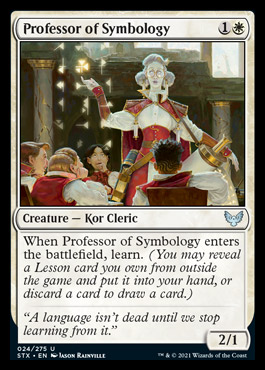
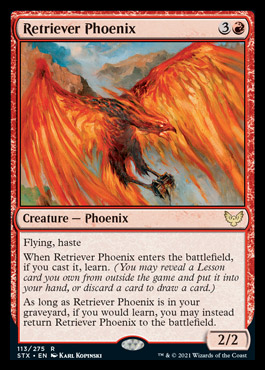
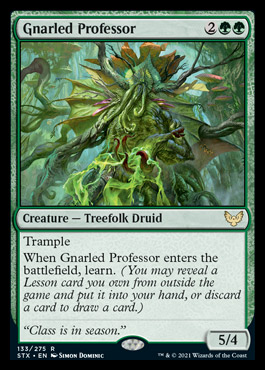
But then these cards are also competing with any existing options and would need to be worth it. Like do any of these 3 actually give me something I'm looking for in an archetype? It would be one thing if they could grab a Lesson on ETB that was actually worth it on curve or right away, but I'm looking at the Lessons and they're all at sorcery speed which means I'm using up most of my turn to cast something overcosted or situational. There is only one card in the set that has an activated ability allowing it to Learn when optimal for you, but it's attached to this:
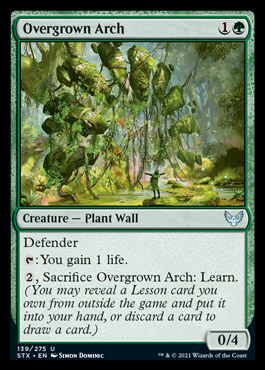
That's a hard pass for most of us I'd hope. This means that I need to know which Lesson card I'm looking for as soon as any of those above three ETB. And at that point it's not like I'm playing with every single Lesson (unless that's something you want to give to each player, but that seems like a lot to process). I can play the colorless ones with any deck, but I'm still limited by my colors to the more impactful Lessons at higher rarity which are still niche and overcosted.
It just feel like the pro-Learn designers are thinking of this mechanic ala Karn, the Great Creator wishboards but the rest of us are focusing on how bad it is to grab a shitty overcosted version of a niche effect. The card(s) being tutored for still have to be worth playing in the first place, like they are when Karn grabs a Grafdigger's Cage. I just don't think that's true for the majority of Learn/Lesson pairs you come up with. It feels like you'd just be better off using those Learn slots for cards that are actually solid and contribute to existing themes rather than shoehorning this in hopes of introducing more options.
Learn/Lessons vaguely remind me of when I tried to include Energy at the time of Kaladesh block. It was neat in Limited and within those dedicated environments with a low power level, but ultimately it turned out that the increased complexity wasn't worth it for something so niche in Cube. What little gains there were to be hand from fringe Energy synergies coming together just weren't worth the additional space being used. Especially when the good cards had competition in their existing slots that worked better with, well, everything else. Ultimately I just ended up scrapping the whole thing within a year or two; there just wasn't enough to work with to where it felt natural in my environment.
But hey, if this is exactly what you were looking for and it works great in practice then more power to you. I just don't find it appealing at all with its current options. Definitely not for a higher-powered environment like mine.
If I'm playing the Learn cards, the majority of them do not synergize with my existing themes or are unimpressive overall being overcosted or having a weak effect. The handful that are okay stats-wise, for my power level, would be the following:



But then these cards are also competing with any existing options and would need to be worth it. Like do any of these 3 actually give me something I'm looking for in an archetype? It would be one thing if they could grab a Lesson on ETB that was actually worth it on curve or right away, but I'm looking at the Lessons and they're all at sorcery speed which means I'm using up most of my turn to cast something overcosted or situational. There is only one card in the set that has an activated ability allowing it to Learn when optimal for you, but it's attached to this:

That's a hard pass for most of us I'd hope. This means that I need to know which Lesson card I'm looking for as soon as any of those above three ETB. And at that point it's not like I'm playing with every single Lesson (unless that's something you want to give to each player, but that seems like a lot to process). I can play the colorless ones with any deck, but I'm still limited by my colors to the more impactful Lessons at higher rarity which are still niche and overcosted.
It just feel like the pro-Learn designers are thinking of this mechanic ala Karn, the Great Creator wishboards but the rest of us are focusing on how bad it is to grab a shitty overcosted version of a niche effect. The card(s) being tutored for still have to be worth playing in the first place, like they are when Karn grabs a Grafdigger's Cage. I just don't think that's true for the majority of Learn/Lesson pairs you come up with. It feels like you'd just be better off using those Learn slots for cards that are actually solid and contribute to existing themes rather than shoehorning this in hopes of introducing more options.
Learn/Lessons vaguely remind me of when I tried to include Energy at the time of Kaladesh block. It was neat in Limited and within those dedicated environments with a low power level, but ultimately it turned out that the increased complexity wasn't worth it for something so niche in Cube. What little gains there were to be hand from fringe Energy synergies coming together just weren't worth the additional space being used. Especially when the good cards had competition in their existing slots that worked better with, well, everything else. Ultimately I just ended up scrapping the whole thing within a year or two; there just wasn't enough to work with to where it felt natural in my environment.
But hey, if this is exactly what you were looking for and it works great in practice then more power to you. I just don't find it appealing at all with its current options. Definitely not for a higher-powered environment like mine.
The reason why I am so willing to advocate for this mechanic is not because learn acts like a wish effect, but because it always draws action. If you have a card that lets you learn, you get a spell added to your hand, no questions ask. Granted, the spell isn't always great, but it's still a card that you have some agency over drawing.I'm not against the idea as a whole, it's just that this first implementation is lacking with present options.
It just feel like the pro-Learn designers are thinking of this mechanic ala Karn, the Great Creator wishboards but the rest of us are focusing on how bad it is to grab a shitty overcosted version of a niche effect. The card(s) being tutored for still have to be worth playing in the first place, like they are when Karn grabs a Grafdigger's Cage. I just don't think that's true for the majority of Learn/Lesson pairs you come up with. It feels like you'd just be better off using those Learn slots for cards that are actually solid and contribute to existing themes rather than shoehorning this in hopes of introducing more options.
But hey, if this is exactly what you were looking for and it works great in practice then more power to you. I just don't find it appealing at all with its current options. Definitely not for a higher-powered environment like mine.
Most people would play a white Goblin Piker or Volcanic Hammer that draws a card. Cantripping is good! Learn cards are basically cantrips but their controller gets to choose from a selection of cards rather than getting something random off the top of the deck. One is usually happy to have the extra card in hand over the opponent, even if it is a somewhat niche removal spell or a slightly overcosted creature. Comparison to a Karn wishboard full of silver bullets is not a realistic case for this mechanic. The most likely play pattern for learn for one to grab a medium spell and then play that spell later when mana allows. Learning is like playing a Fblthp, the Lost to draw an Aven eternal. That pattern probably isn't winning the game by itself, but it certainly helps to create an advantage over the opponent.
Anti-Learn designers seem to be reviewing the somewhat lackluster rates of the bottom 50% of lessons and dismissing the whole mechanic as awful. In truth, the important half is the card with learn, as that is the card which goes into the main deck and will be cast first. Effectively, if a card would be worth considering in an environment if it had the words "Draw a Card" in its text box instead of the word "Learn," it's probably playable at that given power level. That is basically what learn cards do, even if the drawn card is rarely the game winning bomb threat.
Like I said, I'm not trying to convince everyone to add a bunch of learn cards and lessons to their cubes. I'm just saying that the way people tend to be perceiving the mechanic is flawed. It's not a slot void, it's not parasitic (at least in the traditional sense), and it's not simply wishing for bad cards. It's a new smoothing mechanic with a plethora of unique and interesting play patterns.
Onderzeeboot
Ecstatic Orb
But hey, if this is exactly what you were looking for and it works great in practice then more power to you. I just don't find it appealing at all with its current options. Definitely not for a higher-powered environment like mine.
I will reiterate that the base level of the learn spells needs to be adequate for your cube for the mechanic to make any sense. It could very well be that it doesn't fit in a higher-powered environment. For what it's worth, I also frequent the MTG Cube Brainstorming Discord, which has a much higher Spike-ratio than our forums, and they are loving the mechanic, if not always, perhaps, the execution. I value their card evaluation skills highly, so when they advocate for a mechanic even though it seems tailor-made for my power level, I'm paying attention!
